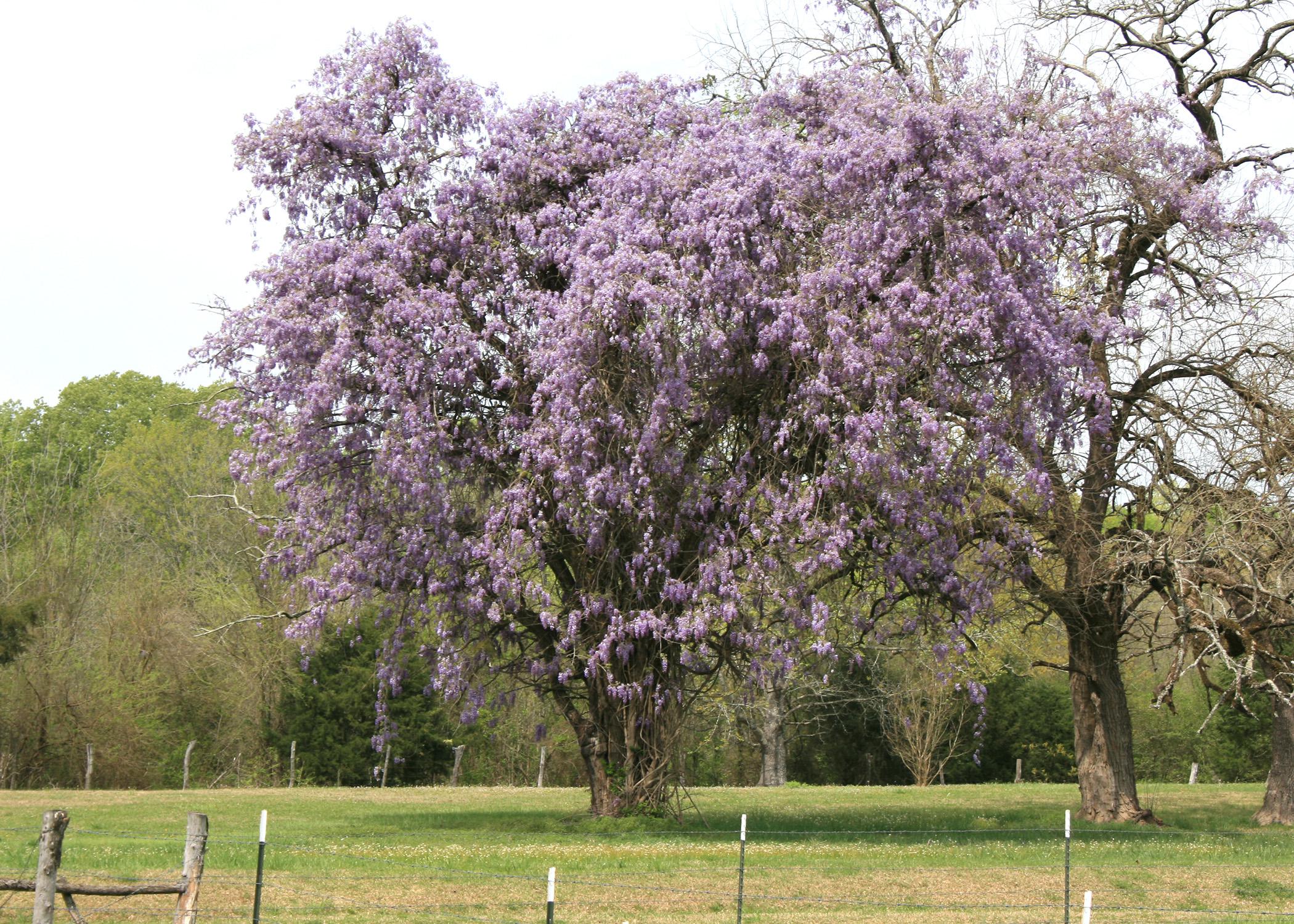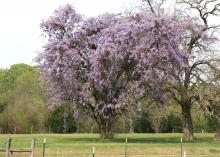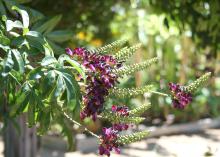Information Possibly Outdated
The information presented on this page was originally released on March 23, 2015. It may not be outdated, but please search our site for more current information. If you plan to quote or reference this information in a publication, please check with the Extension specialist or author before proceeding.
Wisteria blooms are early signs of spring
I enjoyed the warm spring weather while driving around south Mississippi this past weekend. One of the sights I noticed for the first time this year was the wisteria starting to bloom.
Wisteria doesn’t bloom at the first sign of warm weather. It’s one of those plants that waits patiently and is a good indicator that spring has officially sprung.
I’m always amazed at how high wisteria can climb into the tops of the trees, showing off how vigorous and aggressive these plants can be. As such, they can seem to be a little too much for the typical home landscape.
But believe it or not, these vines can actually be used in a confined space, assuming the home gardener is committed to keeping the plant in its place through training and pruning. Never allow wisteria to grow randomly.
Wisteria can be made to grow as a shrub by judiciously pruning and training a main stem, much like the process used to grow grape vines. Older trunks can be extremely twisted and many inches in diameter. Consistent pruning helps control the vigorous growth and actually promotes more flowering each spring.
Wisteria is a great landscape plant because it is hardy and can be extremely long-lived. When given a sturdy trellis or pergola, this climbing vine can provide beneficial summer shade. The plant climbs using twining stems to grab hold of any structure available.
Its landscape value is enhanced in the spring by the pendulous flowers it produces. Along the road, we commonly see purple and white colors. For the landscape, there is a variety of colorful selections available in the nursery trade, ranging from white to pink and blue. These colors often are grafted plants. Check with your local garden centers for availability.
Two deciduous species of wisteria are commonly found for the landscape. Japanese wisteria is perhaps the most common. The pendulous flower clusters open along with the emerging foliage.
The other species is Chinese wisteria, which produces flower clusters that can be 12 inches long or more. The flowers open before the foliage emerges. Flower timing is very close to the flowering dogwood, and these two would make a fantastic landscape combination planting.
Evergreen wisteria also deserves attention in Mississippi. I was first introduced to this plant at Mississippi State University’s Truck Crops Branch Experiment Station in Crystal Springs, where it covers the central pergola. This variety is not as aggressive and invasive as others, and its foliage is leathery and dark green. Flowers emerge in the summer in shades of deep mauve and have a delightful cedar or camphor fragrance. It is hardy in USDA zones 8-10.
Always plant wisteria in the full sun to get the most out of the beautiful spring flowering. The soil needs to be consistently moist and fertile. Use a good-quality compost and controlled-release fertilizer after flowering.
Sometimes the home gardener is frustrated by a lack of flowering. If this happens, make sure the wisteria is receiving enough sunlight, and use fertilizers that are lower in nitrogen. Also, once planted, the wisteria does not like having its roots disturbed and will not tolerate transplanting, especially if transplanted after several years.









